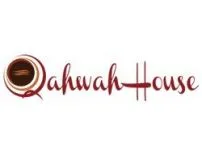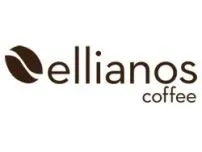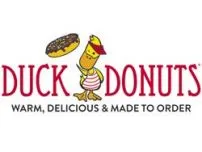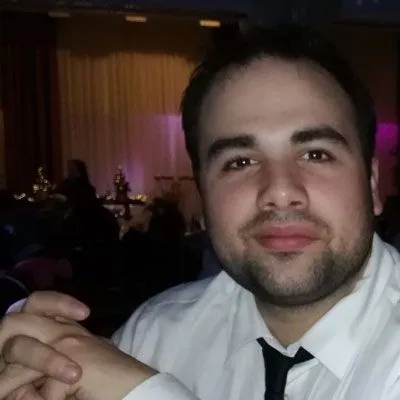Summary
U.S. coffee is a 100+ billion dollar habit market with daily demand, but unit economics depend on rent, labor, power, milk/coffee input, and drive-thru capacity. Average retail rent sits around $25/sf/yr, baristas earn about $14–17/hr, and commercial electricity ranges from ~9¢ to 30¢/kWh by state. To protect margin, brands push espresso drinks, food add-ons, and loyalty.
Coffee is one of the most forgiving categories in U.S. foodservice because demand is daily, repeatable, and emotionally sticky. People buy coffee on autopilot — on the way to work, after the gym, during errands, school drop-off — so a good location with the right access can do business every weekday, not just weekends. On the franchise side, coffee is attractive because the operating line is simpler than full kitchens: espresso machines, grinders, refrigeration, maybe light baking or warming, POS, and a tight front-of-house. That makes training short, staffing flexible, and the model scalable for multi-unit operators. At the same time, modern coffee units don’t live on coffee alone: they sell cold drinks, seasonal beverages, bakery, breakfast sandwiches, and ready-to-eat items to lift the average ticket.
What actually drives coffee unit economics
- Real estate and access. Coffee is ultra location-sensitive. National retail reports (CBRE and other brokers) put average U.S. asking rents in the mid-$20s per square foot per year, but drive-thru pads, corner end-caps, and high-visibility corridors can be 2–3× that. Coffee needs either drive-thru stacking or very obvious walk-by traffic; paying $45–70/sf/yr for a visible morning-traffic site can still be right, while paying the same for a hidden inline won’t work.
- Labor. Baristas and counter staff typically sit around $14–17/hr in many states; coastal cities, Washington, Oregon, and California will be higher, and some jurisdictions require full state minimum even for tipped workers. Coffee is labor-light compared to restaurants, but you’re open long hours (often 6:00–19:00 or similar), so total payroll per month still matters. Good systems cross-train baristas to operate espresso, cold line, and POS to keep headcount low.
- Power and HVAC. Coffee doesn’t have fryers, but it does have espresso machines, grinders, refrigeration, dish/glasswash, and — in hot states — heavy HVAC in the morning sun. Commercial power in the U.S. can be ~9–12¢/kWh in low-cost states and 20–30+¢/kWh in California, New England, and Hawaii. For a busy coffee shop with long hours, that’s the difference between “acceptable” and “why is my utilities line double?”
- Beverage inputs. Coffee beans track the global coffee market (arabica/robusta), but on the U.S. P&L the bigger, more predictable lines are actually milk and alt-milk. Milk prices have been volatile the last few years; oat/almond/coconut milks are routinely higher than dairy and customers ask for them more. That’s why franchises always push syrups, signatures and seasonal LTOs — they improve margin per cup.
- Sales tax and local rules. Coffee to go is generally taxed as prepared food where prepared food is taxed; states and cities have their own sales-tax stacks. For the page it’s enough to say: “check your state + local rate, it may add 6–10% to your ticket.”
- Drive-thru. Drive-thru coffee is where the category has grown the fastest. Here the limiting factor is not the espresso machine, it’s the car queue: site plan, stacking, and order-ahead matter more than interior design. Drive-thru coffee can hit much higher sales per labor hour than inline coffee.
- Delivery and pickup. Coffee is not as delivery-heavy as pizza, but delivery platforms still take 15–30% on delivery and around 6% on pickup. Coffee drinks travel worse than sandwiches; so delivery should be a “convenience channel,” not the main one.
Investment and Fees
Below are common ranges you can show to a manager; the spread is mostly about real estate (inline vs pad/drive-thru), equipment package, and local labor.
| Format / Model | Initial investment (range) | Franchise fee (range) | Ongoing fees (royalty / ad fund) |
|---|---|---|---|
| Inline coffee bar (600–1,000 sq ft) | $200,000 – $450,000 | $20,000 – $40,000 | 4–6% / 1–3% |
| Drive-thru coffee (pad / end-cap) | $350,000 – $900,000 | $25,000 – $45,000 | 4–6% / 1–3% |
| Kiosk / cart (mall / transit / corporate) | $80,000 – $200,000 | $10,000 – $25,000 | 4–6% / 0–2% |
| Coffee + bakery concept | $300,000 – $700,000 | $25,000 – $45,000 | 4–6% / 2–4% |
Cost overlay (to explain the range)
| Cost driver | Average inland / suburban | Coastal / high-traffic |
|---|---|---|
| Rent | $22–28/sf/yr | $40–80+/sf/yr |
| Power | 9–12¢/kWh | 20–30+¢/kWh |
| Barista pay | $14–16/hr | $17–20/hr |
| Sales tax | 5–7% | 7–10% |
The message is simple: the same 800 sq ft coffee bar can be comfortably profitable in a $25/sf market and struggle in a $70/sf market unless it has drive-thru or very strong morning footfall.
Startup costs and ongoing fees
Startup normally covers: leasehold improvements, plumbing for sinks, espresso machines and grinders (often 2-group or 3-group commercial machines), refrigeration (undercounter + display), ice, POS and loyalty, signage, initial smallwares, opening inventory, training, and working capital. Ongoing spend will include:
- royalties and brand marketing;
- labor (baristas + shift lead + manager for multi-unit);
- coffee, milk, alt-milk, syrups, bakery and breakfast items;
- packaging (cups, lids, carriers);
- rent/CAM/insurance;
- utilities (with long open hours);
- delivery/app commissions where used.
Because coffee is a high-frequency / low-ticket business, two lines deserve extra attention in the text: average ticket and attach rate. A store that sells mostly plain coffee at $3.25 will feel the rent far more than a store that sells flavored lattes at $6.25 + pastry. That’s why coffee franchises teach staff to upsell food, alt-milk, an extra shot, or a second item.
Popular coffee franchise formats
Inline coffee bar. Best for neighborhoods, business districts, and mixed-use projects. Lower capex than drive-thru, but depends on consistent foot traffic.
Drive-thru coffee. Highest convenience, best sales per labor hour. Needs proper site planning (queue, ingress/egress), good signage, and tech for order-ahead.
Kiosk / cart. Rent-efficient, good for office towers, transit and malls. Tickets are lower, but labor and rent are lower too.
Coffee + bakery. Broader ticket, better use of morning daypart, can extend into lunch if there’s a cold/salad line. Needs a bit more back-of-house and equipment.
Each format should be priced against the actual rent and utility profile of the location — especially in California, New York, Washington, and Florida, where both labor and power are above national average.
Requirements & ideal franchisee profile
Franchisors usually look for owners with enough liquid capital to cover build-out and working capital, the ability to run checklists daily, and strong people skills — bar-style service lives or dies on staff attitude. Hospitality or QSR background is helpful but not essential if training is good. Ideal operators understand morning daypart planning: open on time, pre-stock, run the cold line, and clear rushes fast. Multi-unit candidates should plan a hiring bench and a traveling trainer, because one opening manager can support several small coffee units.
Compliance and local rules
- Health/sanitation: most states run on their adopted version of the FDA Food Code — so expect inspections on handwashing, temperature, cleaning schedules, and allergen labeling (important for alt-milks and nut-based drinks).
- Hiring: I-9 verification is federal and everywhere; some states require E-Verify for private employers.
- Packaging and waste: some cities and counties have compostable/foam bans; call it out once in the text so the reader knows to check locally.
How to choose a coffee franchise
- Location logic: do you get morning traffic, and can people actually stop there?
- Format: inline vs drive-thru vs kiosk.
- Ticket strategy: does the brand have premium drinks, seasonal LTOs, and food to lift average order value?
- Tech: mobile order, loyalty, gift cards.
- Supply: does the brand lock in coffee/milk pricing, or do you buy local and carry the volatility?
- Growth path: can you open 2–4 units in the same metro without cannibalizing?
Franchise FAQ
What is the initial franchise fee?
The initial franchise fee depends on the brand and market, usually from $10,000 to $45,000.
Do you help with international expansion?
Yes, TopFranchise works with brands that are ready to expand to new countries and regions.
How can I contact the franchisor?
You can fill in the request form on the franchise page, and the brand representative will contact you.















